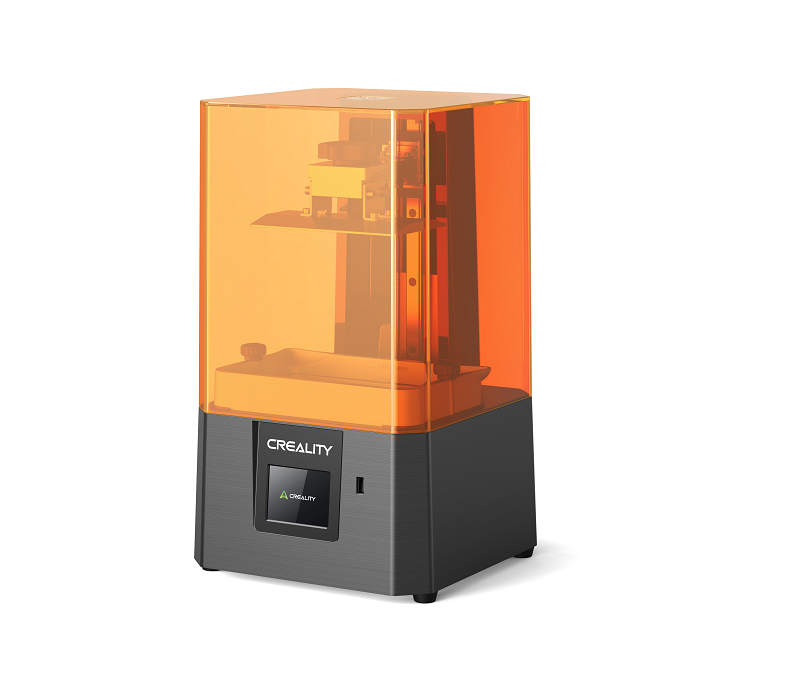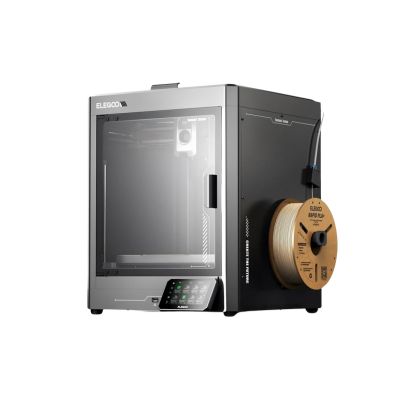Compare Halot R6 vs Centauri Carbon
Comparison between the best 3D printers
Choose the best 3D printer at the best price. The cheapest 3D printers are here.
Buy a 3D printer here with 3D Fila.
 |
 |
|
| Model | Halot R6[BUY Halot R6] |
Centauri Carbon |
| Printing Material | Resin | Filament |
| Buy Resin for Creality Halot R6 | Buy Filament forElegoo Centauri Carbon | |
| Estimated price | $129,00 | $500,00 |
| Manufacturer | Creality | Elegoo |
| Release Year | 2024 | 2025 |
| Print Volume [mm] | 130x82x160 | 256x256x256 |
| Printer Size [mm] | 235x230x395 | 500x500x600 |
| Weight [kg] | 5,8 | 17,5 |
| Power Loss Recovery | NO | YES |
| Maximum Resolution [mm] | 0,01 | 0,1 |
| Processor | ||
| Display | Touchscreen 2,8'' | Touchscreen 4,3'' |
| Power Supply | 42W | 350 W |
| Connectivity | USB drive, WiFi | WiFi, SD, USB |
| Operating systems | Windows, Mac | Windows, Linux e Macbook |
| Date of registration in the system | 2024-12-05 | 2025-02-10 |
| Release date | 2024 | 2025 |
| Extra features | The Creality Halot R6 offers high precision with a layer height of 0.01-0.2 mm, a printing speed of 60 mm/h, and an integral light source with over 90% uniformity. Compact and lightweight, it features a 6.08" monochrome LCD for faster curing and extended durability. Includes Wi-Fi connectivity via Creality Cloud, an intuitive touchscreen interface, and supports remote monitoring and timelapse recording with a USB camera. Ideal for beginners, its robust and user-friendly. | The Elegoo Centauri Carbon is a CoreXY 3D printer with an enclosed structure, direct drive extruder, and hardened steel components for abrasive materials. It features automatic bed leveling, a touchscreen, a filament cutting system, and an elongated nozzle designed to reduce clogs. It offers Wi-Fi connectivity for remote file transfer and runs on a Klipper-based firmware, providing advanced control and precise adjustments. |
| Support for multiple colors and materials (AMS and CFS) | NO | NO |
Notes * |
||
| Cost-benefit | 9 / 10 | 8 / 10 |
| Hardware | 9 / 10 | 6 / 10 |
| Tela | . | . |
| Print volume | 3 / 10 | 4 / 10 |
| Performance | 9 / 10 | 4 / 10 |
| [BUY Halot R6] |
Conclusion |
| In comparing the Creality Halot R6 and the Elegoo Centauri Carbon 3D printers, several factors highlight distinct advantages and trade-offs between the two models. The Halot R6 presents an appealing option for budget-conscious users, offering a significantly lower price point without compromising on precision, with a minimum layer height of 0.01 mm and a robust set of features tailored for beginners. Its compact size and lightweight design make it suitable for home users and small workspaces. Additionally, the intuitive touchscreen interface and wireless connectivity add convenience and ease of use. Conversely, the Elegoo Centauri Carbon, while priced higher, aims to cater to users seeking performance and advanced capabilities. Its larger print volume allows for more substantial projects, and the CoreXY structure combined with a direct drive extruder provides better material handling and versatility. Enhanced features like automatic bed leveling and a Klipper-based firmware offer more sophisticated control, making it suitable for experienced users focused on high-quality prints with a wider variety of materials. Ultimately, the choice between the two boils down to the user's requirements. The Halot R6 excels in affordability and user-friendliness, making it an excellent entry point for newcomers. In contrast, the Centauri Carbon is designed for those ready to invest in a more capable machine that can handle complex tasks and larger projects. Depending on your experience level and project ambitions, either printer could be a valuable addition to your 3D printing endeavors. |

